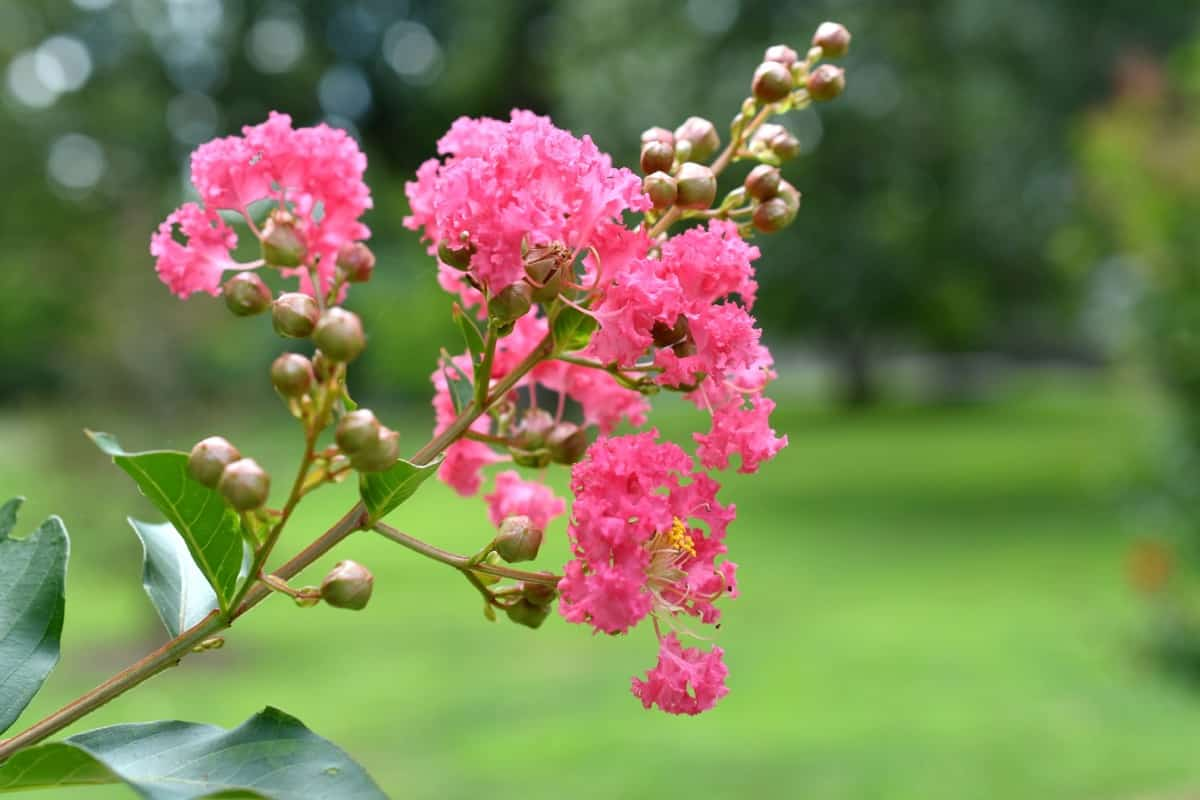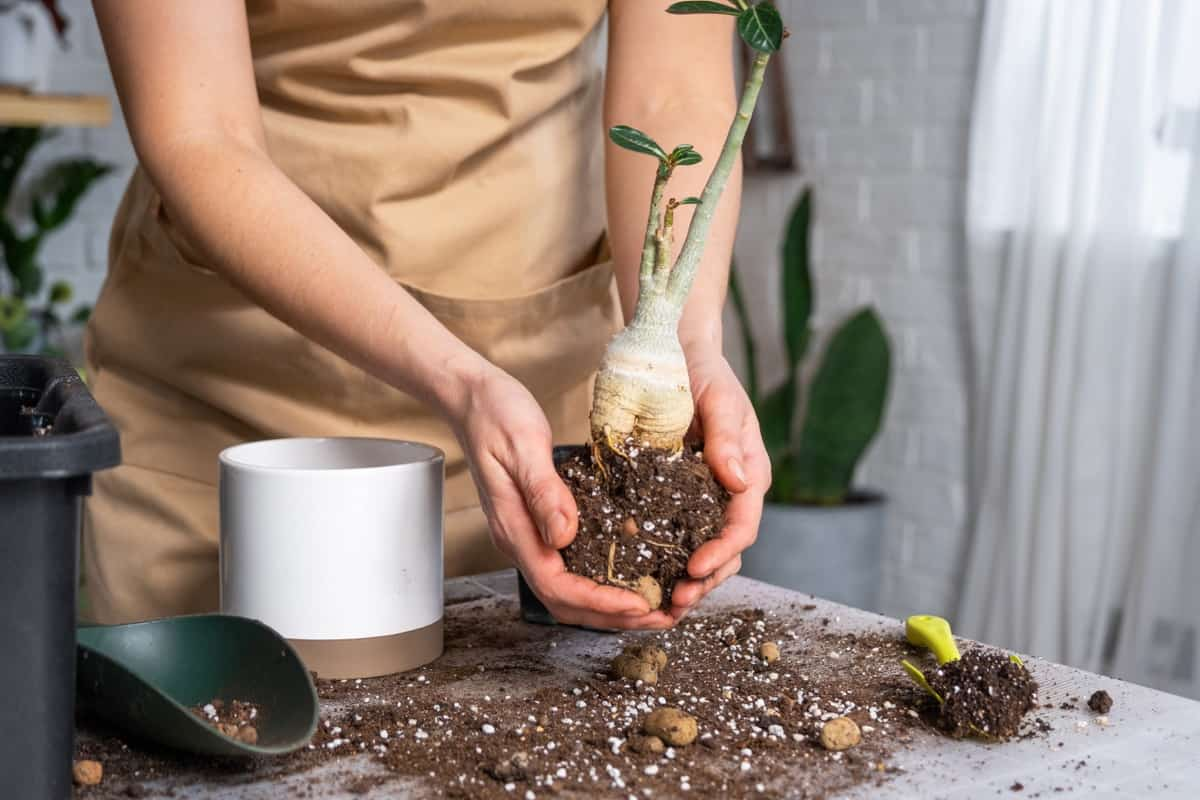Bonsai is an art that seeks to express the beauty and strength of nature in a miniaturized version. It signifies the harmony between humans, the soul of nature, and the universe itself. Crape Myrtle is one such plant species offering a fabulous bonsai subject. They can be styled as outstanding specimens with their appealing bark, splendid spring blooms, and spectacular fall color. A Crepe Myrtle Bonsai provides a unique opportunity for enthusiasts to immerse themselves in this fascinating hobby, honing their skills on how to make Bonsai Crepe Myrtle, as well as discovering the unique aspects of Crepe Myrtle Bonsai care.

How to Grow and Care for Crape Myrtle Bonsai
How to Plant Crape Myrtle Bonsai From Seeds
Planting a Crepe Myrtle Bonsai from seed is exciting, though it requires patience and precise care. Start by selecting high-quality Crepe Myrtle seeds, usually available online or in local gardening stores. Soak seeds in warm water overnight for faster germination. Drain the water and place your seeds on a seed-starting mix the next day in a seed tray. Lightly cover them with the same mix, ensuring they are not too deep, as they need light to germinate.
After planting, water the tray gently to avoid displacing the seeds, then place it in a warm, brightly lit location. It usually takes around two weeks for the seeds to germinate. Once the seedlings have developed a few true leaves, they can be transplanted into individual pots. A mix of general potting soil and sand works well for young plants. After potting, place them in a sunny location and ensure they are well-watered but not overly saturated. Over the next few weeks, you will witness the thrilling transformation of seeds into Crepe Myrtle Bonsai saplings.
Step-by-step Guide to Growing Crape Myrtle Bonsai Indoors
Growing a Crepe Myrtle Bonsai indoors can be a gratifying experience. It starts with choosing the right spot. The tree prefers a location with abundant sunlight. South-facing windows are generally the best choice for your Crepe Myrtle Bonsai indoor setting. Watering is a crucial aspect of indoor bonsai care. The plant should be watered thoroughly when the topsoil feels slightly dry.
Overwatering can lead to root rot, so ensure the pot has good drainage. Regular misting helps maintain humidity around the plant. When fertilizing, use a balanced, water-soluble fertilizer every two weeks during the growing season. This feeds the tree with essential nutrients, promoting healthy growth and vibrant blooms.
Essential Care Tips for Maintaining a Healthy Crape Myrtle Bonsai
Crepe Myrtle Bonsai’s care requires attention to several crucial aspects. Firstly, avoid temperature extremes. Although Crape Myrtle can withstand heat, the sudden transition from high to low temperatures can stress the plant. Similarly, water temperature should be moderate; avoid using cold water straight from the tap. Proper ventilation is key. Ensure your indoor environment isn’t stale or stagnant, as a lack of fresh air can encourage disease and pest infestations. Regularly rotating the plant also helps it grow evenly on all sides.
In case you missed it: How to Grow and Care for Azalea Bonsai: Planting, Repotting, and Pruning

Best Soil Mix for Growing Crape Myrtle Bonsai
The best soil mix for a Crepe Myrtle Bonsai should offer excellent drainage while retaining enough moisture for the roots. A combination of Akadama, Pumice, and Lava rock is a popular choice among bonsai enthusiasts. These components provide essential minerals and help aerate the soil, promoting healthy root development.
Pruning Techniques for Shaping a Crape Myrtle Bonsai
Pruning is an essential aspect of how to make Bonsai Crepe Myrtle. It maintains the size of your bonsai and influences its shape and style. The ideal time for major pruning is during late winter when the tree is dormant. During the growing season, light pruning or pinching back new growth helps to maintain the tree’s shape and encourages branching. Use sharp and clean tools when pruning to prevent harming the tree.
Sunlight Requirements for Thriving Crape Myrtle Bonsai
Crepe Myrtle Bonsai thrive in full sun, requiring at least six hours of direct sunlight daily. While they can tolerate partial shade, insufficient light can result in leggy growth and poor flowering. Therefore, whether grown indoors or outside, ensure your Crape Myrtle Bonsai gets plenty of sunlight.
Common Pests and Diseases Affecting Crape Myrtle Bonsai and Their Treatment
Pests and diseases can sometimes afflict Crepe Myrtle Bonsai, with aphids and powdery mildew being common culprits. Aphids can be managed by spraying the bonsai with water to dislodge them or by using insecticidal soap. Powdery mildew, a fungus that leaves a white coating on leaves, is best prevented by ensuring good ventilation and avoiding overly damp conditions.
Winter Care Tips for Protecting Crape Myrtle Bonsai From Cold Temperatures
Protecting your Crepe Myrtle Bonsai from cold temperatures becomes crucial as winter approaches. While the trees are relatively hardy, they can suffer if the temperature dips below freezing. Consider moving your bonsai to an unheated garage or shed if it is in a pot. Wrapping the pot in bubble wrap can also provide extra insulation.
Repotting Guide for Rejuvenating Mature Crape Myrtle Bonsai
Repotting is a vital part of the life cycle of a bonsai, facilitating the tree’s growth by providing fresh soil and room for root expansion. It also offers an opportunity to inspect and prune the roots if needed. Before repotting, water the tree thoroughly, making it easier to remove from the pot. Once out, gently tease away the old soil from the roots, prune it if necessary, and then place the tree in its new pot filled with fresh soil. Water well after repotting, ensuring the tree settles in comfortably.
In case you missed it: How to Grow and Care for Honeysuckle Bonsai: Planting, Repotting, and Pruning

Crepe Myrtle Bonsai Acclimatization
Another crucial step in your Crepe Myrtle Bonsai journey is acclimatization. Do it gradually when you transition your bonsai, indoors to outdoors, or from one location to another. This allows your bonsai to adjust to light, humidity, and temperature changes. For example, if moving your bonsai outdoors for the summer, start by placing it in a shaded location for a week or two, then gradually move it to a location where it will receive more sunlight. By doing this, you will reduce the stress on the tree, helping it stay healthy and vigorous through changes in its environment.
Conclusion
The journey of growing a Crepe Myrtle Bonsai, whether from seed or cutting, is filled with anticipation, patience, and satisfaction. As you immerse yourself in the process, you’ll bond with this miniature piece of nature. Your dedication to providing the right conditions for growth, timely watering, careful pruning, and vigilance against pests will transform you into not just a bonsai artist but a devoted caretaker of life.
- Feed Your Flock for Less: Top 10 Tips to Save on Chicken Feed
- Ultimate Guide to Ossabaw Island Hog: Breeding, Raising, Diet, and Care
- Hatching Answers: The Top 10 Reasons Your Chickens Aren’t Laying Eggs
- Eggs and Economics: Breaking Down the Cost of Raising Backyard Chickens
- Defend Your Greens: Proven Methods to Keep Iguanas Out of Your Garden
- Ultimate Guide to Cinnamon Queen Chicken: A Comprehensive Guide for Beginners
- Ultimate Guide to California Tan Chicken: Breeding, Raising, Diet, Egg-Production and Care
- Ultimate Guide to Marsh Daisy Chicken: Breeding, Raising, Diet, and Care
- 10 Types of Chicken Farming Businesses You Can Start for Profits